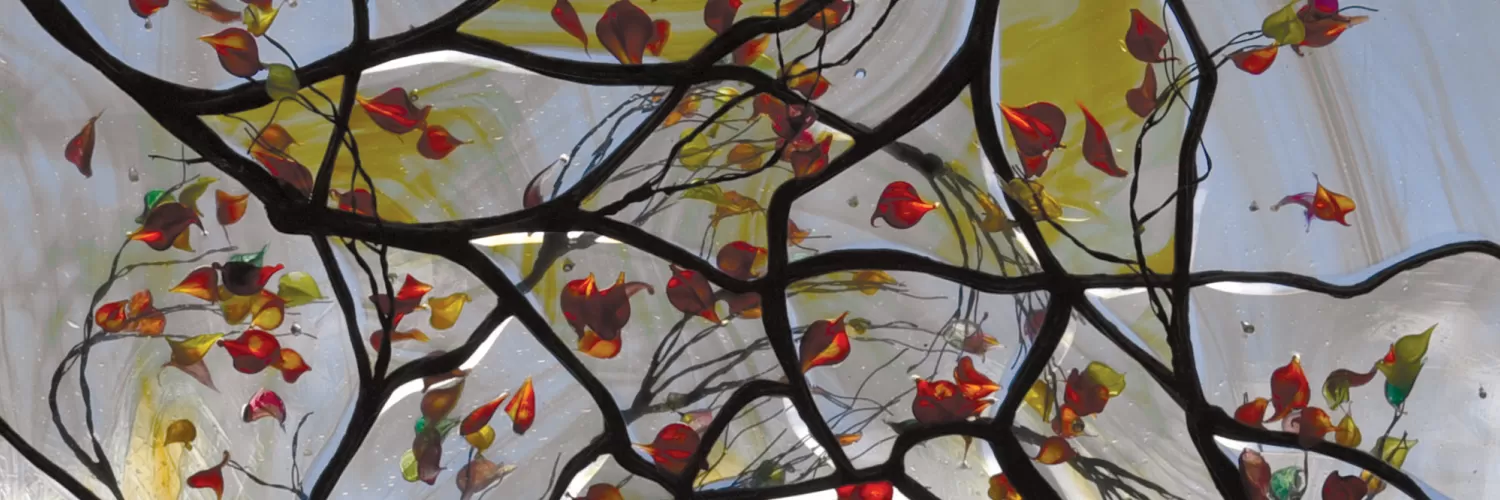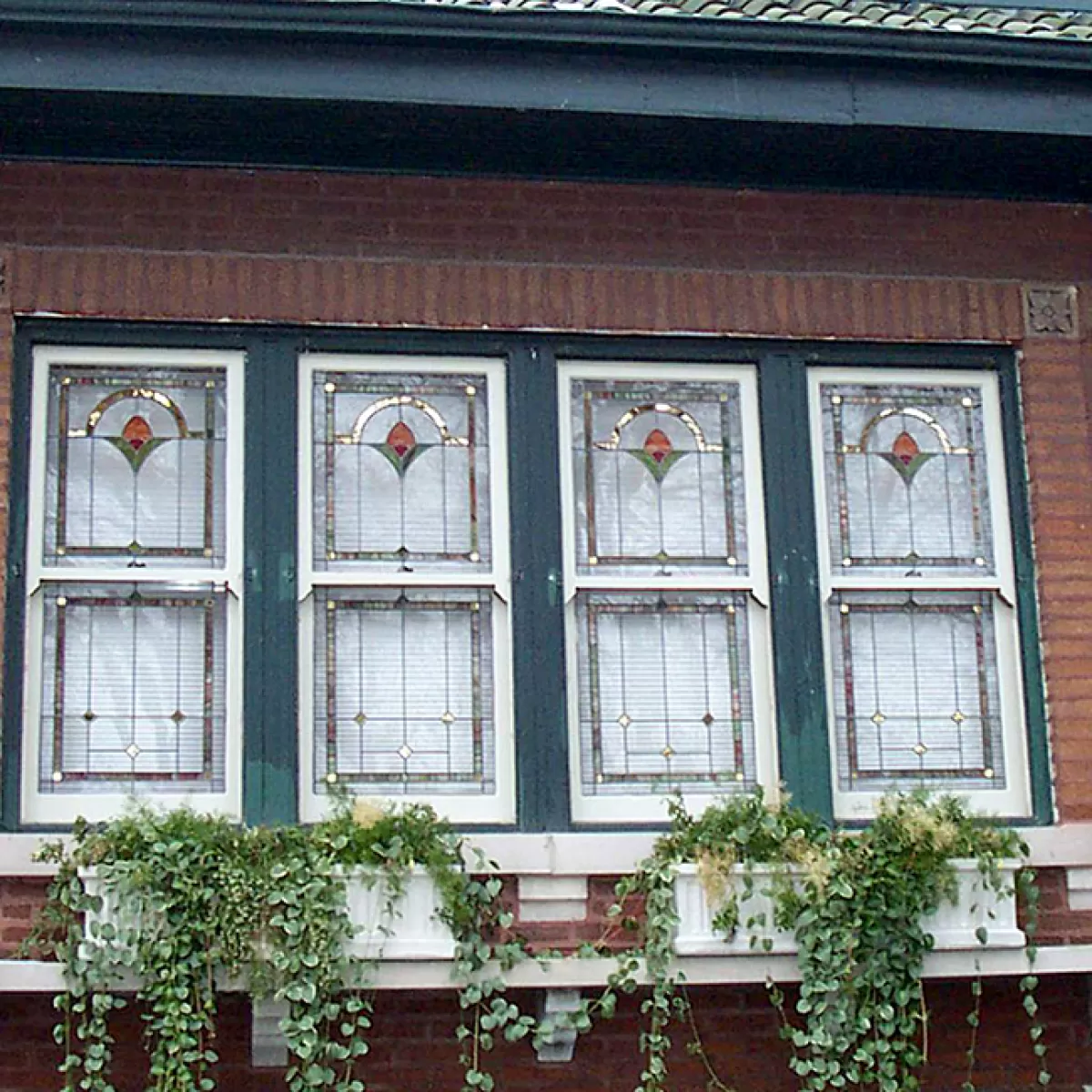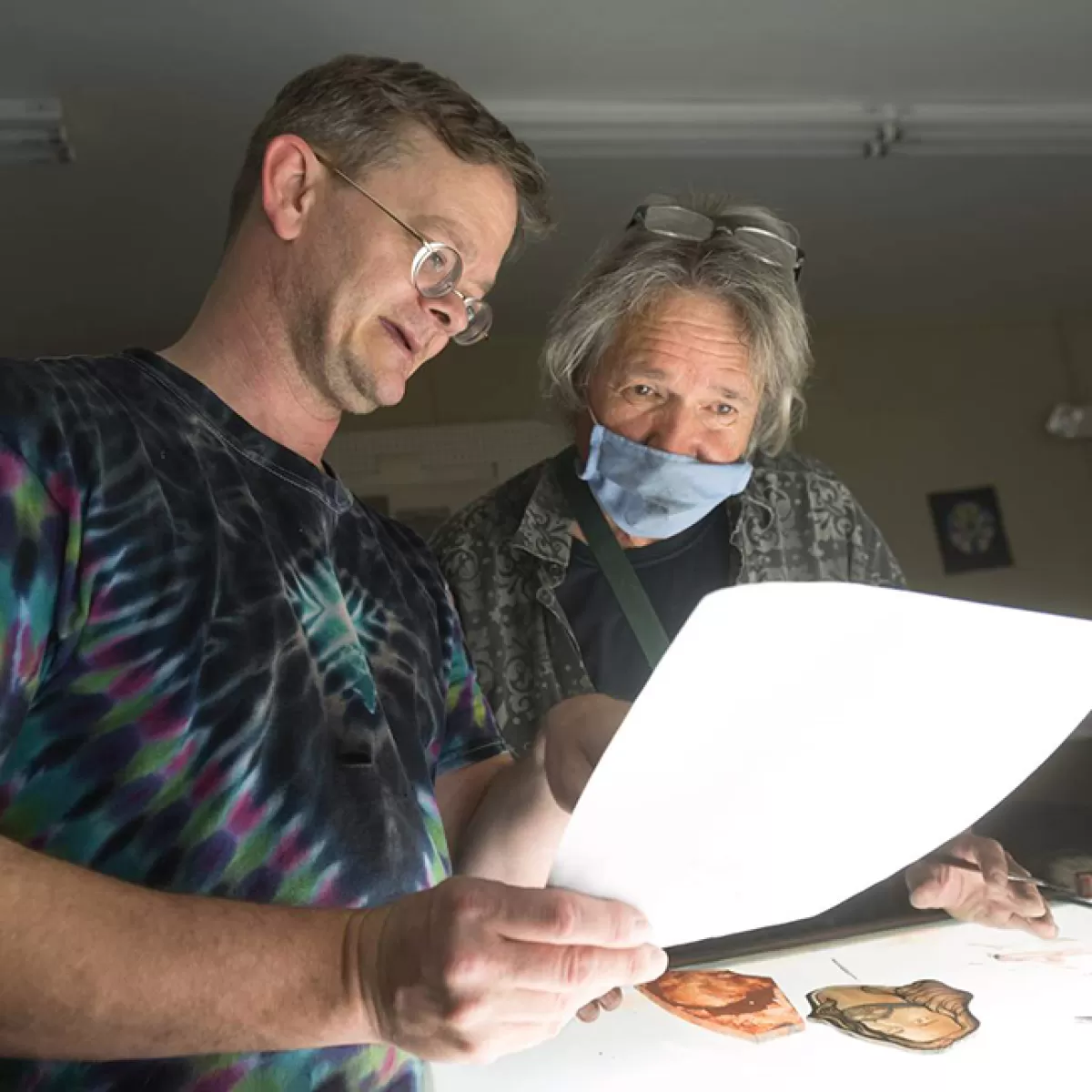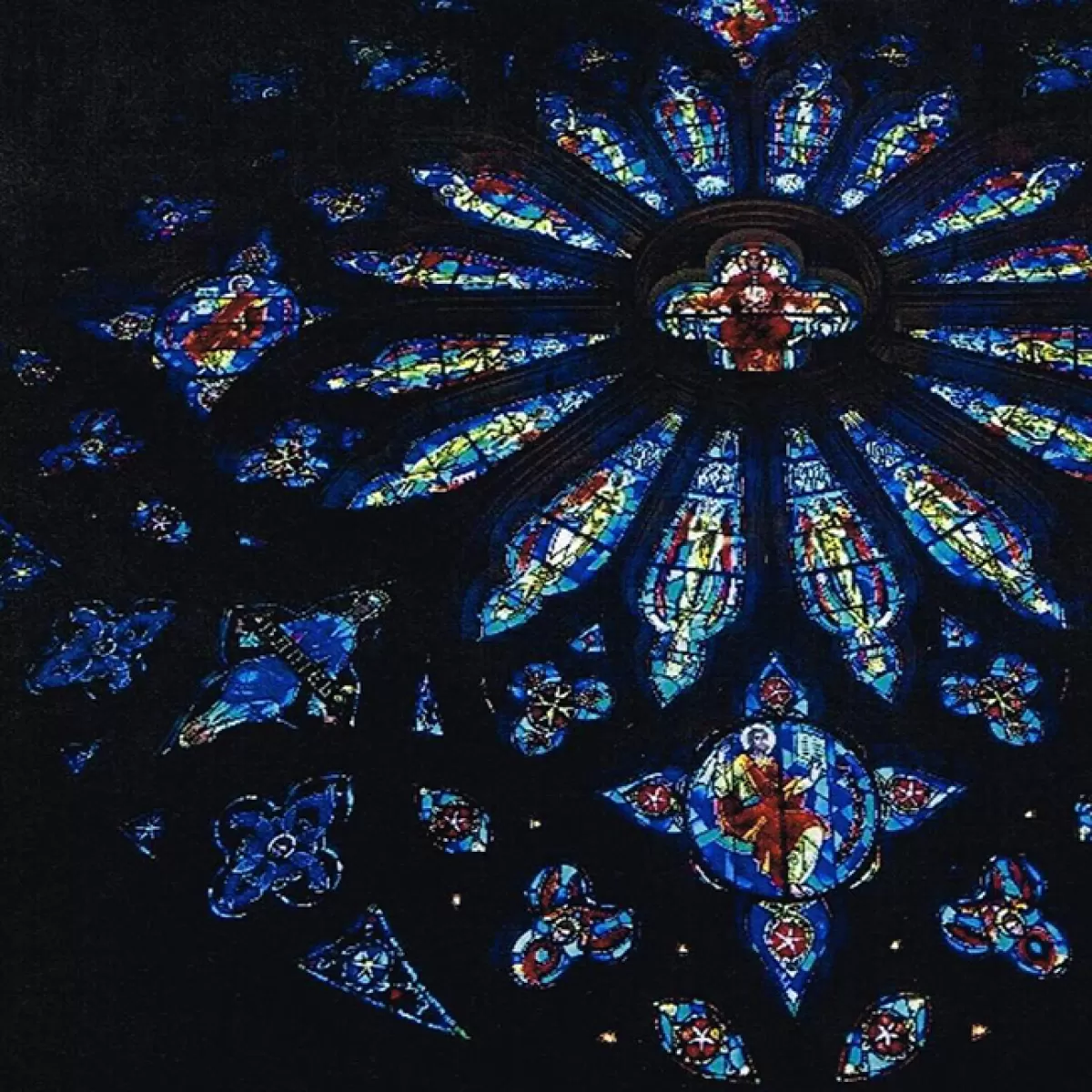The history and appreciation of stained glass is inseparable from both its setting within architecture, from the very nature of the material itself, and also from its history within a community.
This work that we do and the care of our buildings is crucial to our communities. While it might seem like the best window to have is a "Tiffany" window—there is far more to it than that. As we move forward in our nation's growing conversation of appreciation and care, let’s think about how the stained glass fits into the larger meaning of the structure and the people itself and how it speaks to the larger mission of healing.
Stained glass, murals, frescoes, and all architectural art turn our buildings into living museums. Our homes into places of peace and refuge. Public architecture is the inescapable environment of monumental stained glass. We must GO to see stained glass. For many, it is a familiar and comforting part of the fabric of our everyday lives. Stained glass windows stand or fall by their proper or improper existence in buildings. By the success of their overall installation and by the success of withstanding the ravages of time.
In this day and age, we are lucky that we no longer need to rely on anecdotal evidence to make the case for sustaining and preserving the fabric of America's historic structures and the architectural art within them. Numerous studies by organizations like Partners for Sacred Spaces, Associational for Preservation Technology International, and others have shown time and time again that it is better for our health, the well-being of our communities, as well as the sustainability of our planet to take care of our historic structures.
Some basic cleaning information follows below as well as some guidelines on reaching out to professionals, and resources for more information.
Cleaning Guidelines for Stained & Leaded Residential Windows
While there is nothing wrong with the patina of age on older windows, sometimes, a gentle clean is necessary and it’s important to know the do’s and don’ts of basic stained glass cleaning.
Too much dirt build-up on a window’s surface can actually trap and hold moisture against surfaces—moisture is any window’s worst enemy and the impurities and toxins (often found in greater amounts in city air) are especially damaging.
The first rule of thumb is not to overdo it! A feather duster or soft cotton cloth should be sufficient to regularly dust the surfaces of your window. If your window is dirty to the point of having accumulated a little residue turn to a cleaner that’s free of ammonia and vinegar, as well as pH-neutral and non-abrasive. A little distilled water with a very small amount of pH-neutral dish soap in conjunction with the cloth should do it.* Wring the cloth out until it’s only barely damp, and work gently from the top down. In order to get at the edges and corners of the glass, you can use a cotton swab. Finally, dry with a clean, dry cloth, or even paper towels.
Do Not Use
- Ammonia-based cleaners
- Acid-based cleaners, including vinegar
- Solvents
- Steam or high-pressure equipment
- Any type of mechanical or air abrasive equipment
- Any caustic or abrasive cleaners such as oven or bathroom cleaners, scouring powders, steel wool, etc.
The damage that can be done to the stained glass by these products and methods is irreversible.
*If your window has any sort of painted surface, the stability of the paint should be checked before anything other than a dry cloth is used for dusting/cleaning. If paint flakes off when touched or easily smudges, then it is best to leave your window alone until professional restoration is needed—the paint stability can be addressed then.
How can I tell if my windows need repair or restoration?
A crack is obviously just a crack, but when might a small crack be indicative of larger problems on the horizon?
Signs your window might need TLC from a professional studio:
- Buckling: Significant bowing or accordion like folding at the lead seams.
- Weathering: Waterproofing cement has fallen out from under the lead flanges and there are large chunks missing throughout.
- Light gaps: You can see daylight getting in around your lead seams.
- Installation: The perimeter putty has deteriorated and your window seems loose in the frame.
- The lead appears white or to be “blooming” out across the glass surface from either the exterior or interior.
These may be signs that it is time to contact an SGAA Accredited Professional or Professional member.
For complete listings of those members, Find a Studio here.
Read more about selecting a studio that meets the needs of your project here.
Standards & Guidelines for the Preservation of Stained & Leaded Glass Windows
The primary goal of conservation professionals, stained glass restorers, conservators and consultants is the preservation of cultural property. In the late 1970’s the Stained Glass Association at one of its annual conferences brought the most experienced restoration studios together to form a new committee focused on restoration and repairs, with their goal being both internal and external education. We needed to collaborate to determine best practices around the country as well as share that knowledge with owners and stewards. We needed to get in front of misinformation and a growing number of craftsmen coming into the field with little to no experience offering stop-gap solutions as complete restorations.
The Standards & Guidelines for the Preservation of Stained (& Leaded) Glass Windows is a regular effort by SGAA Accredited Professional studios who come together from across the country to share knowledge and research. As a community, they critically examine their work in front of and together with their peers to evaluate techniques and systems that stand the test of weather, time, and public use. This publication is meant to be a resource for owners and stewards of stained glass work and help demystify the process of both caring for work as well as getting professional help in restoring or repairing any windows that may need it.
Protective Glazing for Stewards and Caretakers
As part of our industry’s Reference and Technical Manual, first published by the Stained Glass Association of America (SGAA) in 1988 and updated in 1992, the issue of Protective Glazing was tackled according to the leaving research and practices of the day. The same philosophies, materials, and information are still valid today (2020). In the 30 years since publication, however, misinformation and confusion has continued to dominate the conversation in regards to protective glazing solutions. This might be the result of the fact that there is no “one-size-fits-all” solution. There is no magic solution for increased efficiency, and protective glazing is not a replacement for actual restoration.
To try to provide some relief from the misinformation that abounds for stewards and caretakers trying to make a decision, we have put together a brief guide based on the continuing, valid information presented in Chapter 20, Section A, Number 4 “Protective Glazing” Chapter in our 1992 “SGAA Reference & Technical Manual” in combination with today’s best practices and material information about the most commonly available options utilized across the country. This guide is not intended to be exhaustive but should be an adequate reference when used in conjunction with trusted advice from an industry expert, such as an Accredited Professional Studio.
In this guide, you find information on the basic philosophy of Environmental Protective Glazing, sometimes referred to interchangeably as ‘Secondary Glazing’ or simply ‘Protective Glazing.’ You will also see information on an overview of information in regards to ventilation, condensation, materials commonly used, their pros and cons and the lifespan of those materials, and a note on energy efficiency.




